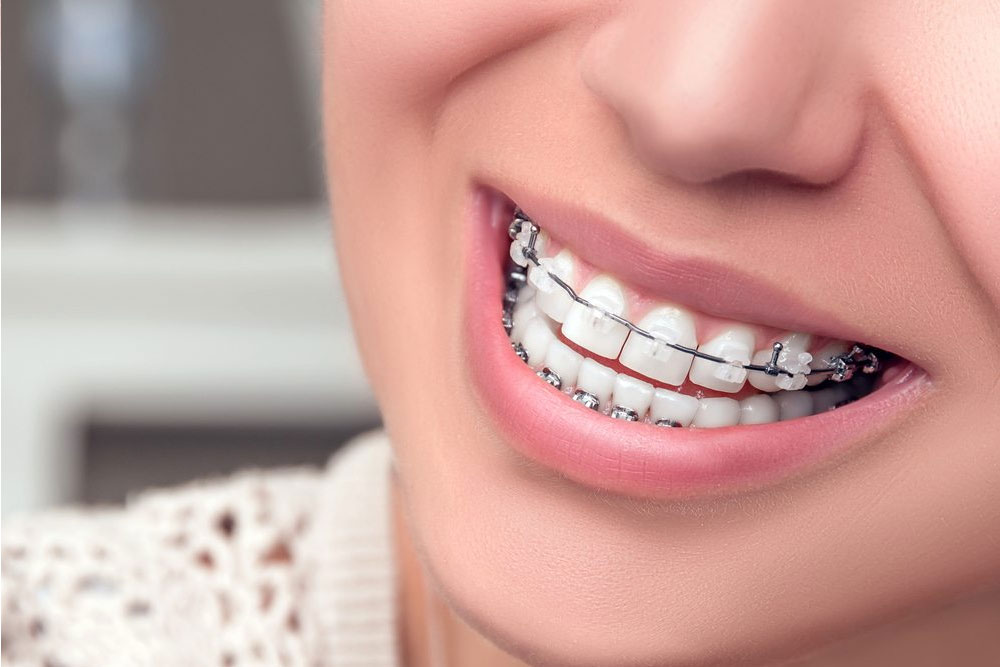Orthodontic treatment, specifically braces, is often sought to correct misaligned teeth, improve oral health, and boost self-confidence. But one of the most common questions is, "What is the best age for teeth braces?" This article delves into the ideal timing for braces, the benefits of starting at the right age, and what you should consider before beginning treatment.

Understanding Orthodontic Treatment
Orthodontic treatment involves the correction of misaligned teeth and jaws. Braces, a popular orthodontic solution, use gentle pressure to gradually move teeth into their correct positions. While braces can be effective at nearly any age, research suggests there are optimal windows for treatment that provide the best results with minimal discomfort and duration.
The Recommended Age for Braces
Early Intervention: Ages 6-10
Children between the ages of 6 and 10 may benefit from an initial orthodontic evaluation. This stage, often referred to as the early mixed dentition phase, is when both baby teeth and permanent teeth are present. Early evaluation allows orthodontists to identify potential issues such as crowding, crossbites, or jaw alignment problems.
Key benefits of early intervention include:
-
Preventing severe misalignments.
-
Guiding jaw growth for better alignment.
-
Reducing the need for more invasive procedures later.
However, braces are typically not applied during this phase unless necessary to address severe functional issues.
Ideal Age for Braces: Ages 11-14
Research shows that the best age for braces is usually between 11 and 14 years old. At this age, most permanent teeth have erupted, and the jaw is still growing. This makes it easier to correct alignment issues effectively and efficiently. Starting treatment during this phase often ensures:
-
Shorter treatment durations.
-
More predictable outcomes.
-
Improved oral hygiene during the process.
Late Teen Years and Adults
While the pre-teen and early teen years are considered ideal, it is never too late to seek orthodontic treatment. Many adults choose to get braces to enhance their smiles and improve oral health. Modern options, such as clear aligners, have made adult orthodontics more appealing and convenient.
Factors Influencing the Timing of Braces
Individual Dental Development
Every child develops differently. While age is a general guideline, the timing of braces depends on factors such as:
-
The eruption of permanent teeth.
-
Severity of dental misalignment.
-
Oral health conditions.
Parental and Professional Input
A trusted orthodontist will evaluate a child's dental structure and recommend the best time for braces. Parental observations about the child's oral health can also provide valuable insights.
Benefits of Starting Treatment at the Right Age
Efficient Results
Beginning orthodontic treatment at the optimal age often leads to quicker and more efficient results. This is because the jaw and teeth are still malleable, making it easier to shift teeth into the desired position.
Improved Oral Health
Straight teeth are easier to clean, reducing the risk of cavities, gum disease, and other oral health issues. Early correction can also prevent abnormal wear on teeth.
Enhanced Confidence
Misaligned teeth can affect a child's self-esteem. Braces can help children and teens feel more confident about their smiles, positively influencing social interactions.
The Process of Getting Braces
-
Initial Consultation: During the first visit, an orthodontist will assess the alignment of the teeth and jaws using X-rays and impressions.
-
Treatment Plan: A customized treatment plan will be created based on the individual's needs.
-
Placement of Braces: Braces are applied, and periodic adjustments are scheduled to ensure progress.
-
Completion and Retention: Once the treatment is complete, retainers are used to maintain the results.
Post-Treatment Care
Proper aftercare is essential to preserve the results of orthodontic treatment. Key steps include:
-
Wearing retainers as prescribed.
-
Maintaining excellent oral hygiene.
-
Attending regular follow-up appointments.
Addressing Common Concerns
Do Braces Hurt?
Patients may experience mild discomfort during adjustments, but this is temporary. Modern braces are designed to minimize pain and maximize comfort.
How Long Will Treatment Take?
The duration of treatment varies depending on the complexity of the case but typically ranges from 18 to 24 months.
Are Braces Expensive?
The cost of braces depends on the type of braces chosen and the duration of treatment. Many orthodontists offer flexible payment plans to make treatment accessible.
Conclusion
So, what is the best age for teeth braces? Research consistently highlights the ages of 11 to 14 as the ideal time to begin treatment for most children. Early evaluations and timely interventions can lead to healthier smiles, improved oral health, and boosted confidence. However, age should not deter anyone from seeking treatment—a confident smile is achievable at any stage of life. Consult an orthodontist to determine the best plan for your individual needs.





